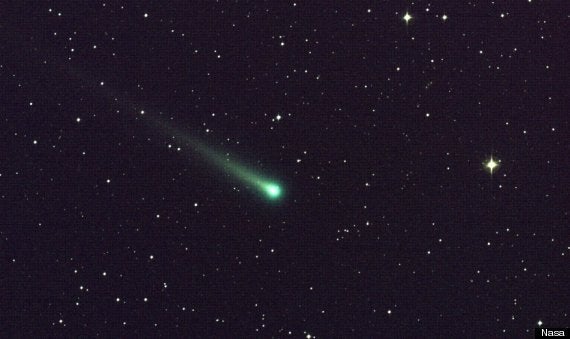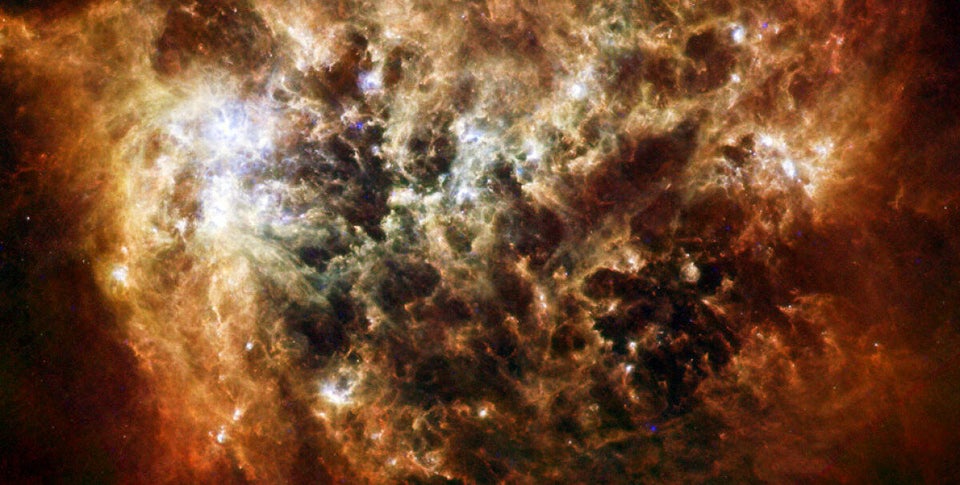The eagerly-awaited comet Ison, which was due to pass close to earth next month, is likely to have disintegrated after a close encounter with the sun. According to astronomers, the comet was scheduled the move past the outer layers of the sun on Thursday evening, some 730,000 miles from the star’s surface but close enough to be exposed to temperatures of 2,700C.
Although the heat is enough to melt rock, experts predicted that the comet, which is around 1.2-miles across, would survive, providing earthly gazers with spectacular views as it passed with tail across the December sky. Observers on board a Nasa spacecraft captured the comet making its approach to slingshot around the sun but nothing emerged from the other side, leading scientist to conclude that Ison had disintegrated.
"Ison probably hasn't survived this journey," admitted US Navy solar researcher Karl Battams. Phil Plait, an astronomer who runs the Bad Astronomy blog, agreed, concurred: "I don't think the comet made it."

A five-minute exposure of Ison taken by Nasa earlier in November
More from the Press Association:
Nasa solar physicist Alex Young said it would take a few hours to confirm Ison's demise, but things were not looking good. He said the comet had been expected to appear in images from the Solar Dynamics Observatory spacecraft at around 5pm British time, but almost four hours later there was "no sign of it whatsoever".
He added: "Maybe over the last couple of days it's been breaking up. The nucleus could have been gone a day or so ago." Astronomer Dr Dan Brown, from Nottingham Trent University, said earlier: "Astronomers around the world are hoping that Ison will become an amazing sight for the naked eye in the first half of December.
"They are keeping a close eye on it, using some of their solar observatories in space. People at home can also capture a glimpse if it survives. Just look out for it half an hour before sunrise from December 1 onwards. It will be visible low in the east-south-eastern horizon.
"This close encounter with the sun also offers a unique opportunity for astronomers to analyse the composition of a comet. Comets are icy, dusty snowballs - the remains from the formation of our solar system 4.5 billion years ago. The long tail containing the material frozen in the comet and released through the heat of the sun offers astronomers the chance to identify different elements."
TOP STORIES TODAY
The comet was discovered last year by two amateur astronomers using Russia's International Scientific Optical Network (Ison). It was born in the Oort cloud, a shell of scattered icy objects right at the outermost edge of the Solar System. The cloud is nearly a light year from the sun, a quarter of the distance to our nearest neighbouring star, Proxima Centauri.
Sometimes a comet is nudged out of the cloud by the gravitational tug of a passing star, and sent on a journey taking millions of years that eventually brings it into the inner Solar System. Computer models show that Ison is one such comet. However, it is unusual in being a first-time visitor and also in a sun-grazing orbit.
Dr Brown added: "It has already been bright enough for astronomers to capture amazing pictures. However, if the comet survives its burning close encounter with the sun it may have a huge and impressively long tail with a brightness that might make it an easy to spot object even with the naked eye.
"This happened in 1965 with the comet Ikeya Seki that had an enormously long tail. But some comets, like Lovejoy three years ago, have been ripped apart during their close encounter by the sun's gravitational force. The magic limit for survival of the comet seems to be the size, which has to exceed two kilometres so it does not get boiled away or ripped apart by the sun. Ison is estimated to be that size, so we should all cross our fingers and await our early Christmas comet."
